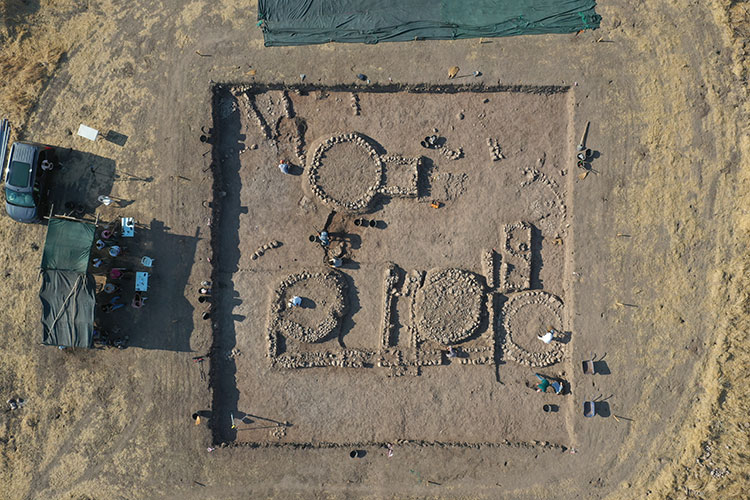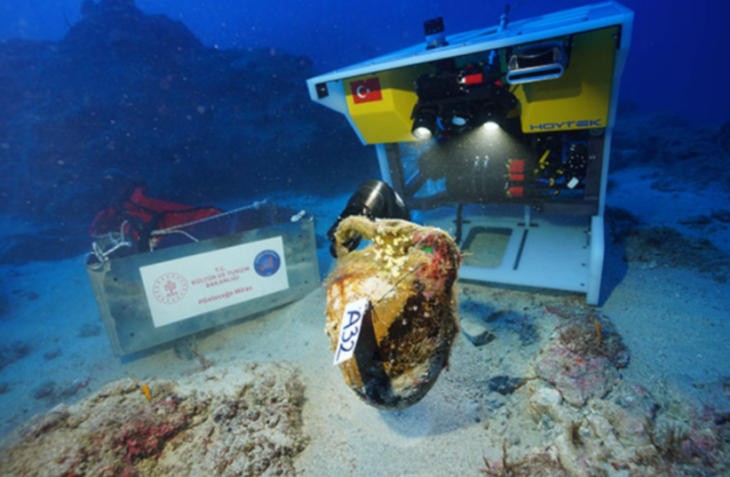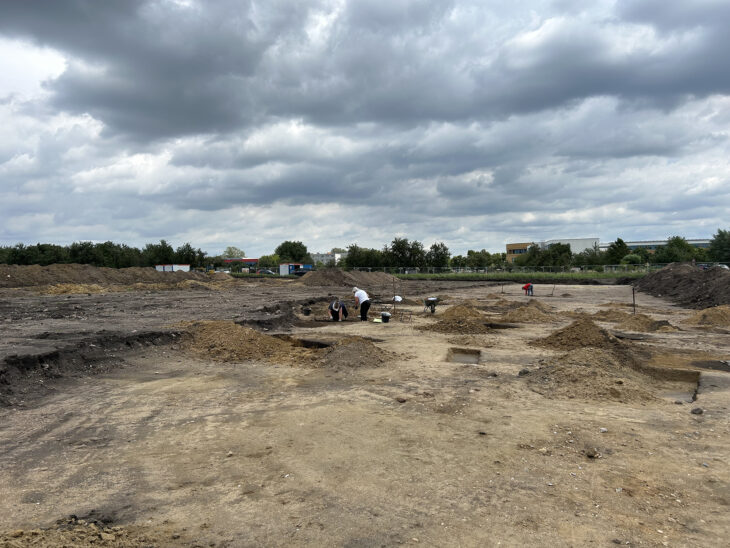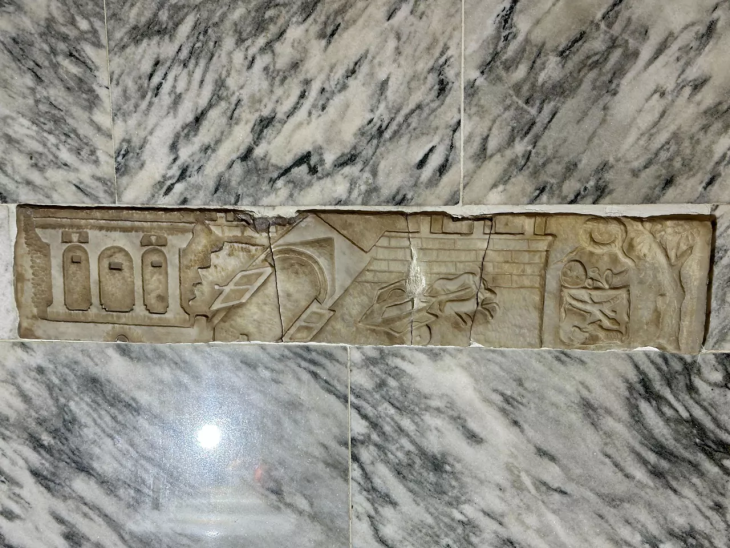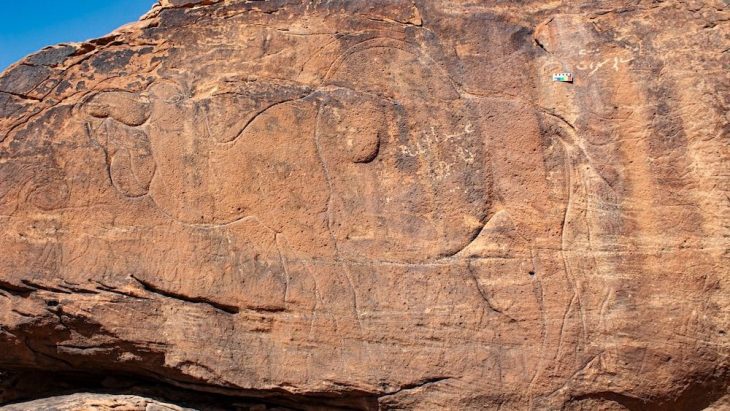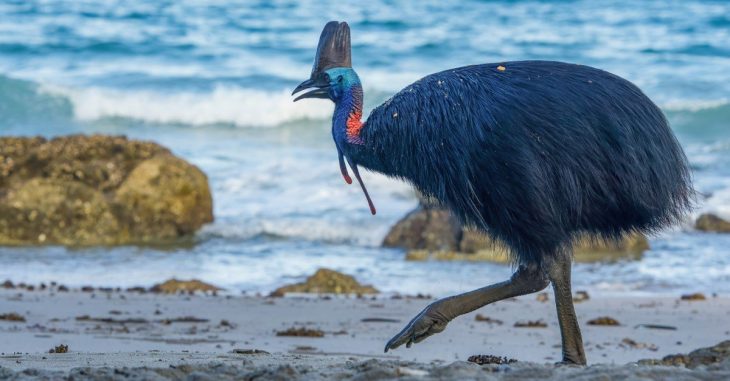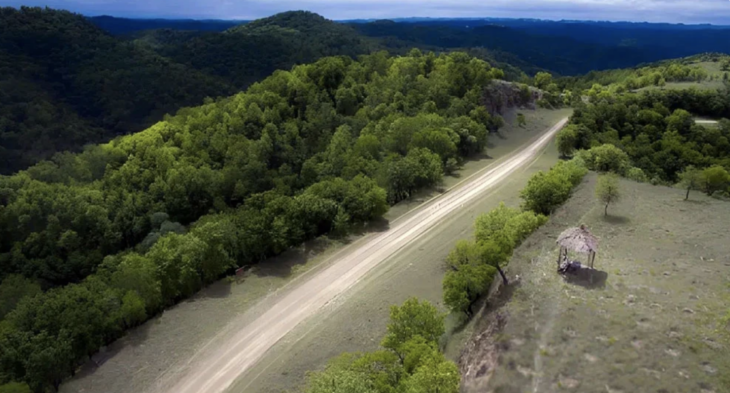A child skeleton and a silver ring presumed to be used for babies dating back to 7,600 years ago were found during excavations at Domuztepe Mound (Domuztepe Höyük) in the Türkoğlu district of southern Türkiye’s Kahramanmaraş province.
Domuztepe is an approximately 20-hectare archaeological site that was inhabited as early as 6,400 BC and abandoned by 5,450 BC. In 2021, an earlier settlement was discovered on the mound.
The fifth millennium is a key period in the development of complex societies in the Near East. Domuztepe is one of the largest sites known from this period and is located in southeast Türkiye, on the northwest edge of the Halaf’s traditional heartlands.
The archaeological digs at the site have been continuing under the leadership of associate professor Halil Tekin of Hacettepe University’s Faculty of Letters and Archaeology Department in coordination with the Ministry of Culture and Tourism.
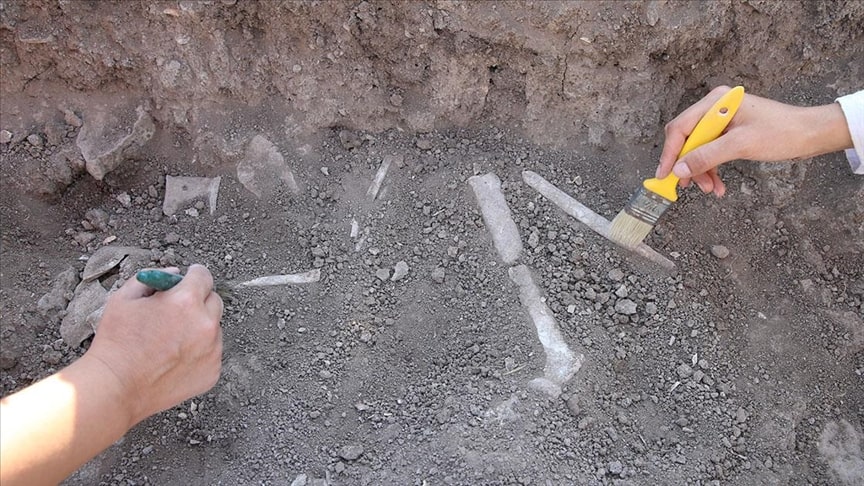
During the excavations carried out in the mound this year, a child skeleton was found in the layer dated to 7,600 years ago. The exact age of the skeleton will be determined after DNA studies and carbon 14 tests. In the same context, a silver ring was found, thought to have been used for babies.
📣 Our WhatsApp channel is now LIVE! Stay up-to-date with the latest news and updates, just click here to follow us on WhatsApp and never miss a thing!!
Head of Excavation Assoc. Prof. Dr. Tekin reminded AA correspondent that two human skeletons, one a baby and the other 6-7 years old, were found about 10 days ago during the works carried out in the same area.
Explaining that 7,600 years ago, a new child skeleton was found in the layer, Tekin said that these children’s graves around the keyhole-shaped structure, which is considered as ‘Tholos’ in archaeology, made them hopeful:
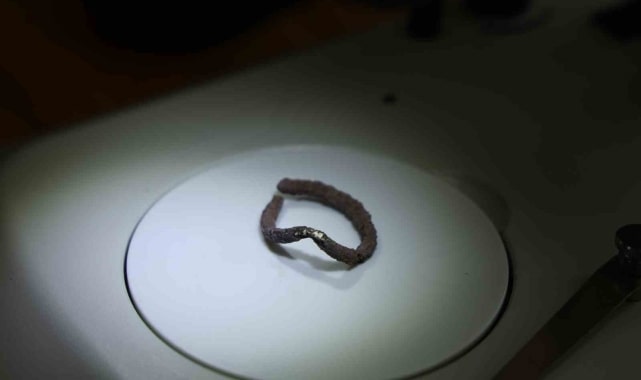
‘Actually, we were expecting this grave because we found the remains of a hearth on the east side. It is already a rule in archaeology. From the Stone Age to the late periods, if you find a hearth, the expectation of a baby or child grave inside or outside the house increases. While we were already in this expectation, we came across the grave.’
Stating that the newly found child skeleton and the silver baby ring were dated to 7,600 years ago, Tekin pointed out that the expectations increase as the studies continue and stated that a surprise can always be encountered under the soil.
This year’s excavations at Domuztepe Mound came to an end.
Cover Photo: AA

